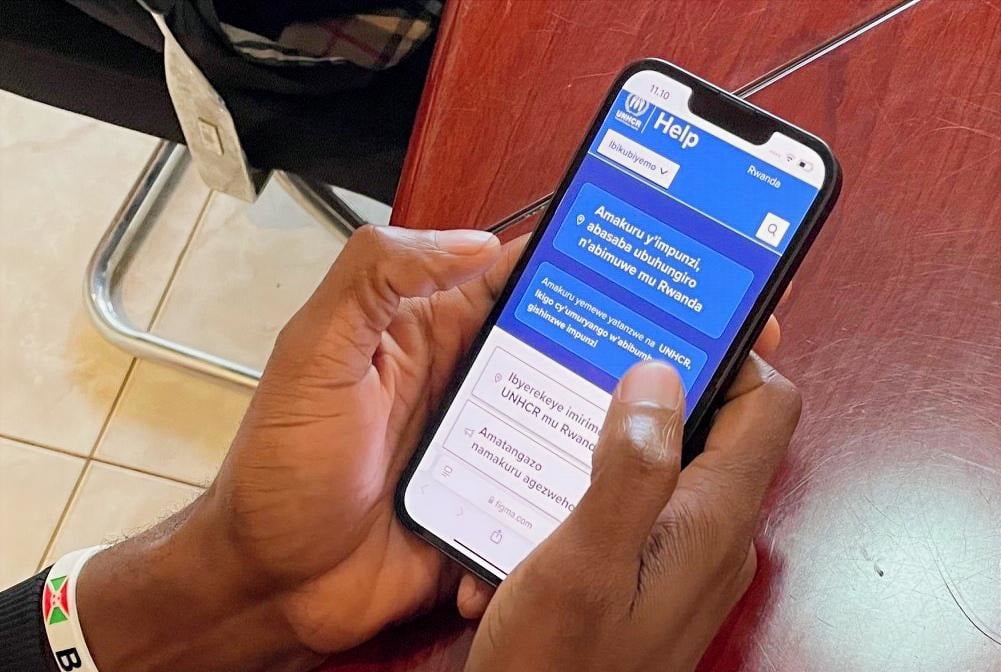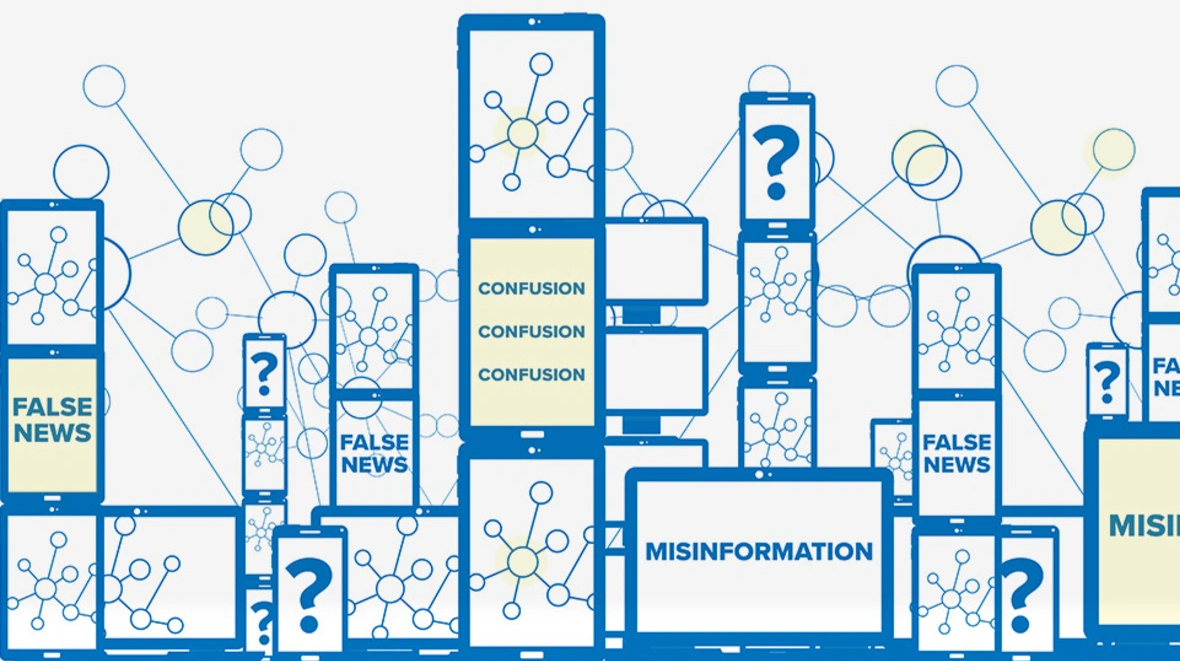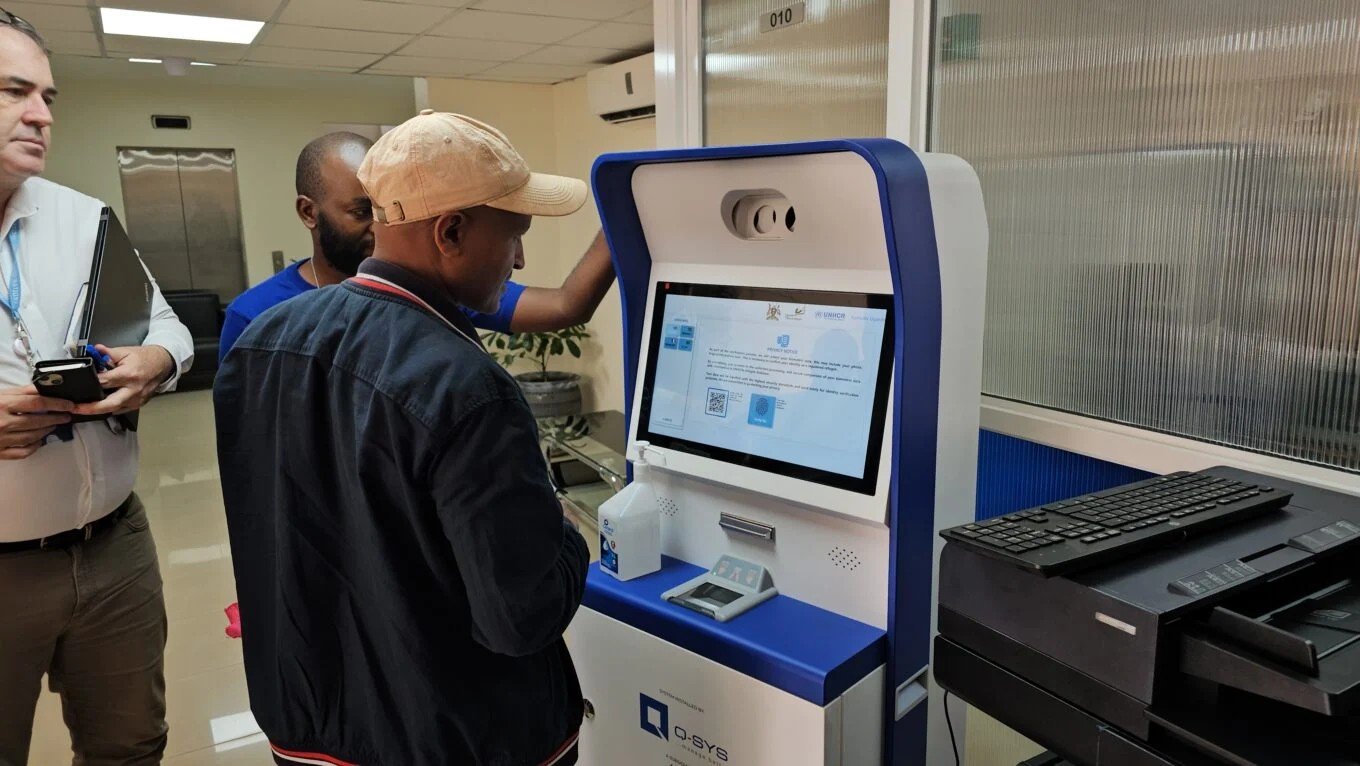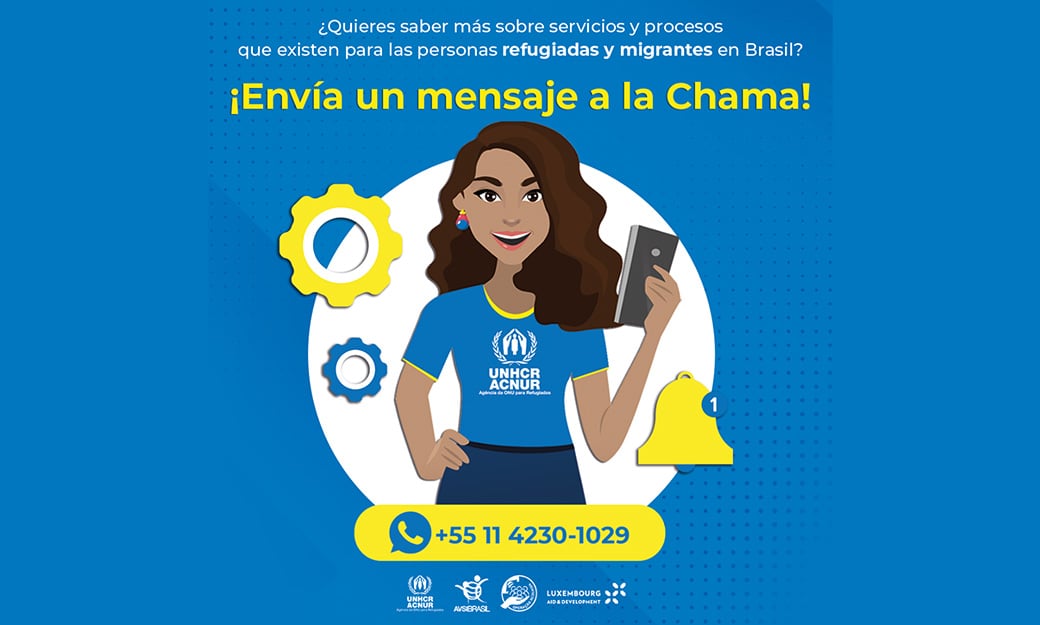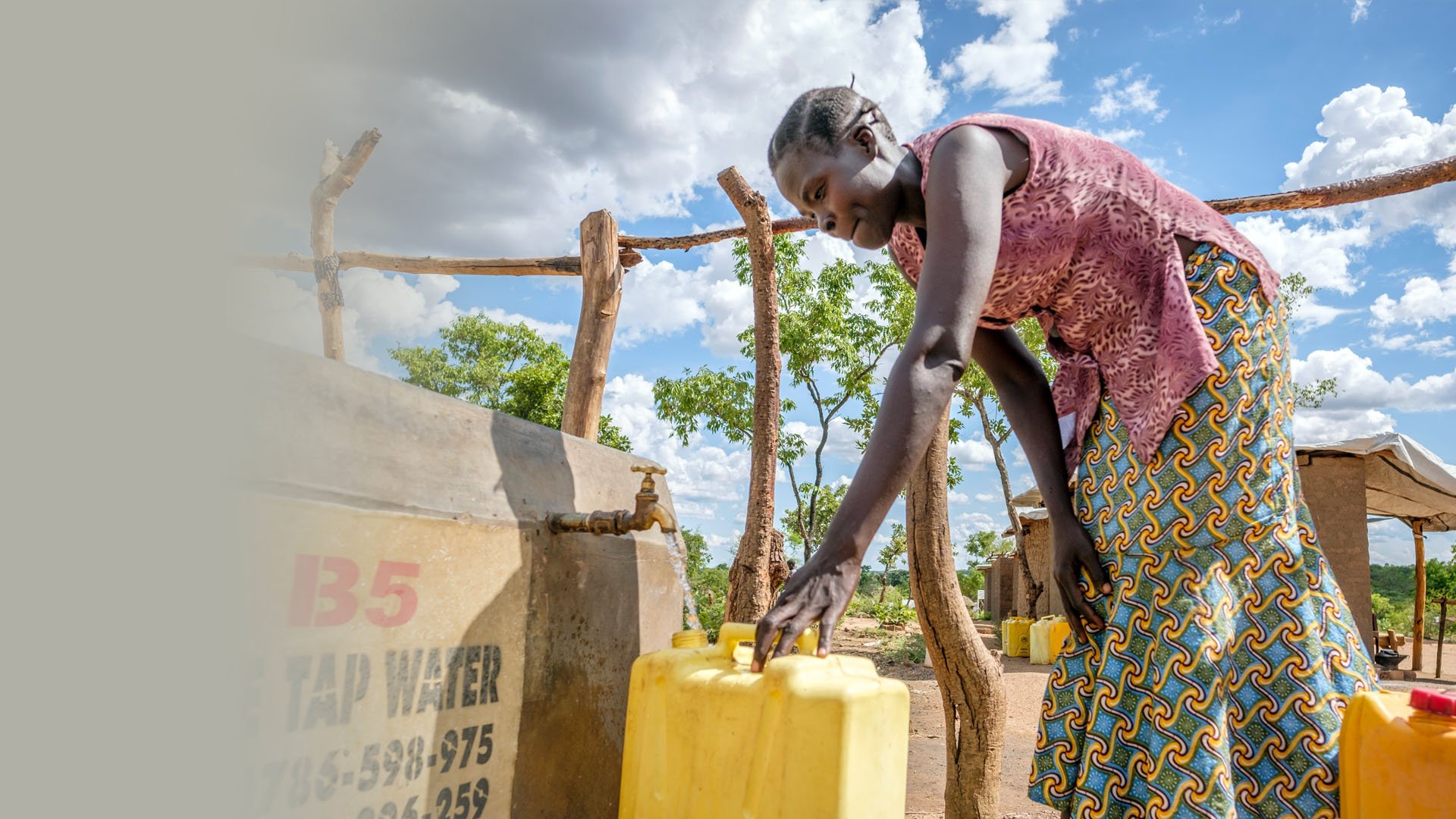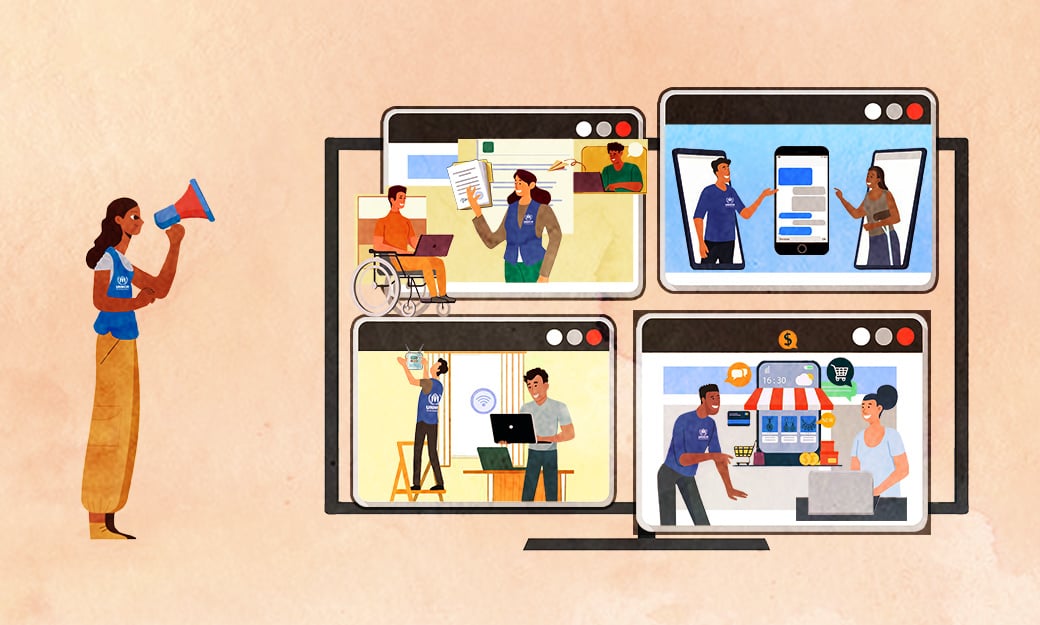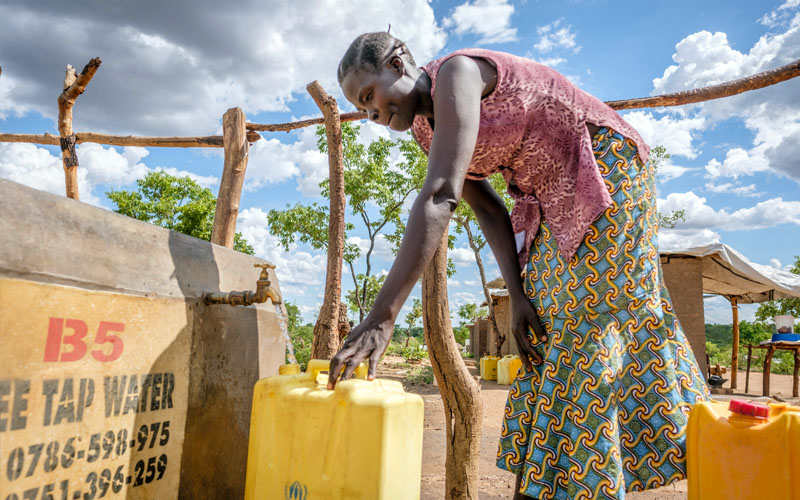
PRIORITY OUTCOME
WORKING
DIGITALLY
Outcome
UNHCR utilizes innovative digital solutions tools and builds the skills necessary to transform delivery, collaboration and knowledge management to work more efficiently and effectively.
Photo credit: © UNHCR/Jiro Ose
Current context
Digital approaches can transform the way we deliver our work, whether in large well-connected offices or remote field locations.
- UNHCR is engaging in a coordinated and focused business transformation to optimize processes and systems.
- We are collaborating with UN partners to develop systems that meet shared requirements, such as collaboration on a UN Payment Gateway.
- The pandemic catalyzed the use of digital tools to engage UNHCR’s workforce, enabling effective collaboration across multiple countries and reducing the need for travel.
- There has been a proliferation of online communication and collaboration tools creating increased training needs and guidance on the most appropriate tool to use.
- Digital tools are not always accessible to workforce with disabilities.
- UNHCR colleagues in remote conditions may have lower bandwidth. Systems must be optimized for all connectivity levels.
- Global approaches to digital workplace and intranet solutions exist but localized, personalized digital workplace experiences are harder to create.
- Knowledge management should be optimized. Knowledge needs to be preserved, organized and shared across the organization. This is especially relevant in a rotational system where knowledge needs to be frequently passed on.
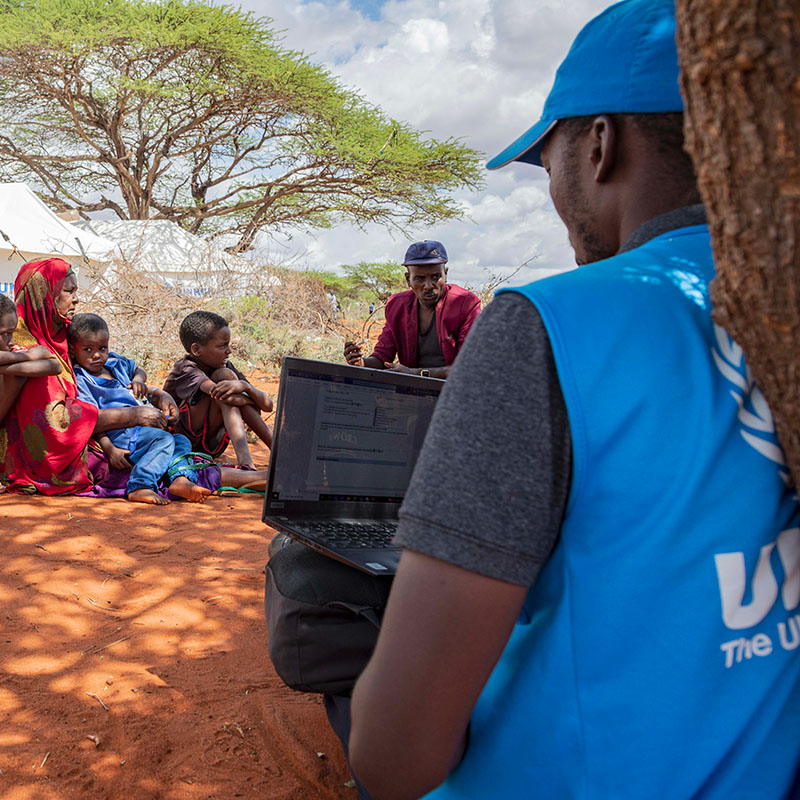
A UNHCR colleague using his laptop computer while speaking with newly arrived refugees in Mirqaan Settlement, Ethiopia. ©UNHCR/Diana Diaz
Five-year results
By the end of 2026, UNHCR will have:
- Carried out its Business Transformation Programme, which leverages cloud-based technology to simplify and streamline a range of processes including planning, budgeting, finance, human resources, and resource mobilization.
- Re-designed business processes to enable us to work more efficiently and optimize opportunities for digital innovation.
- Implemented a new digital workplace delivering relevant localized and personalized content. Ensuring that UNHCR’s personnel and partners are equipped to effectively collaborate and share knowledge internally and with key partners.
- Provided a digital workplace where all communications and tools are accessible to those with disabilities.
- Identified, assessed and scaled up new digital solutions, with consideration on use in areas with low/no connectivity and in fragile conflict-affected settings.
- Cooperated with UN partners to develop systems to meet mutual needs.
- Enabled UNHCR’s workforce to have completed the digital training needed to empower them to meet their objectives.
Priority actions
UNHCR will:
- Finalize roll out of new business systems ensuring high-end user experience and interoperability.
- Implement new digital workplace communication and collaboration platforms with a focus on knowledge management and sharing between regions, with partners and inter-agency.
- Encourage digital innovation at field level through the Digital Innovation Fund.
- Assess all digital tools for accessibility and put in place a roadmap for a digitally accessible workplace.
- Develop a digital planning toolkit for national and regional long-term strategies including planning guidance, indicators and maturity assessments.
- Put in place a coordination framework to track the development of local solutions and assess the potential for cross-operational reuse.
- Establish a Digital Network of Excellence delivering digital training and a capacity-building programme, best practices and guidance on standards.
- Ensure that sustainability and the preservation of the organization’s data are considered for all new and existing solutions.

